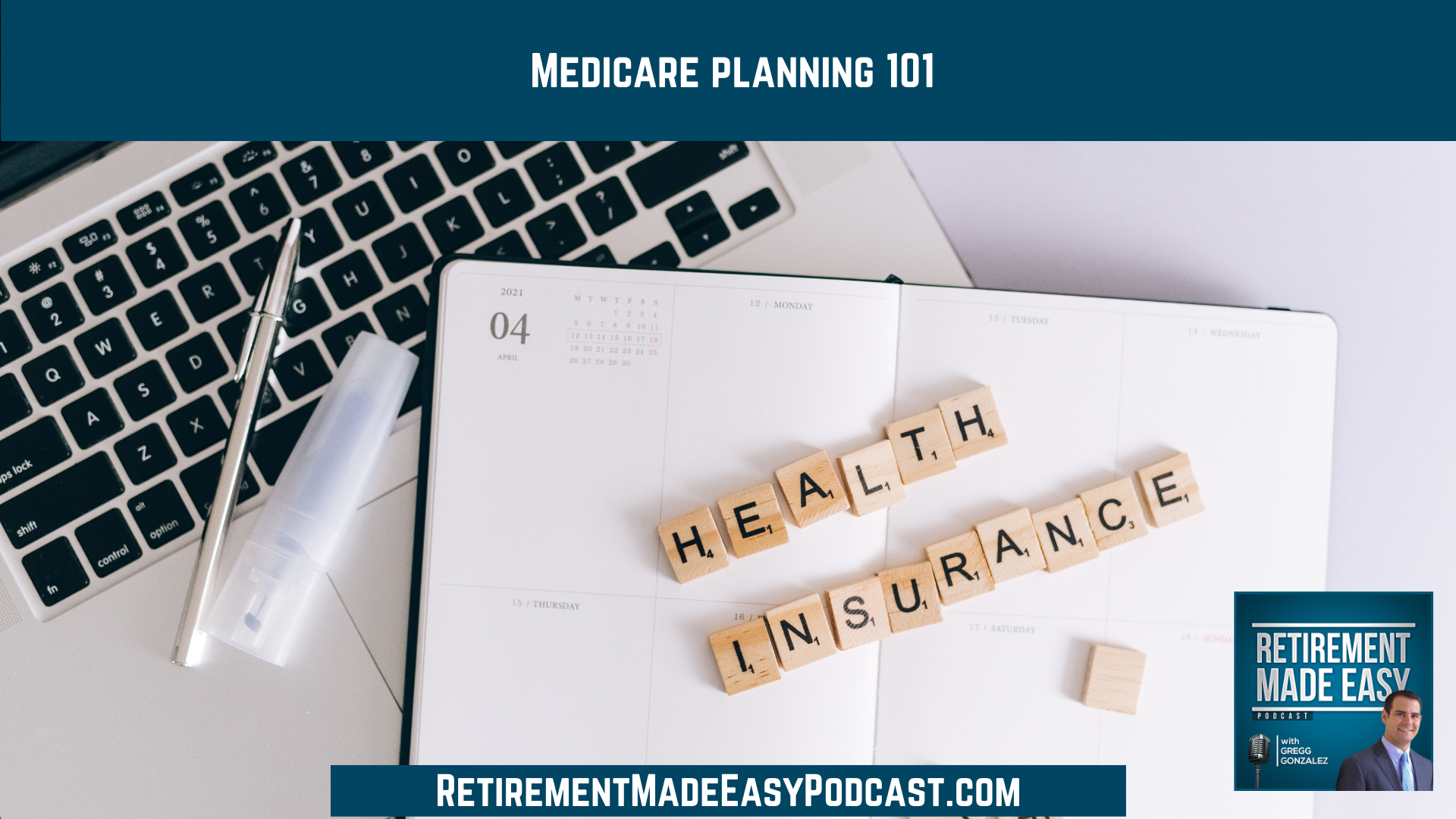
In 2019, there were 61.5 million people on Medicare. By 2027, it’s estimated that 75 million Americans will be on Medicare. That’s just four years from now. The #1 reason that people push off retirement is because health insurance is too expensive. Do you know what you’ll be paying for health insurance when you retire and get on Medicare?
Medicare is multi-faceted. It can be complicated to understand. So in this episode of Retirement Made Easy, I’ll break down the very basics of Medicare planning to help you make a more informed decision about your retirement.
You will want to hear this episode if you are interested in…
- [3:47] Submit a question at RetirementMadeEasyPodcast.com
- [6:05] Understanding the basics of Medicare Part A & B
- [8:28] Calculating your Medicare Part B premium
- [11:59] Medicare Part C: Medicare Advantage vs. Medicare Supplement
- [14:48] Medicare Part D: Prescription drugs
- [15:44] How do you choose the right plan?
- [18:01] Make Medicare planning part of retirement planning
Understanding the basics of Medicare Part A & B
Generally speaking, you are eligible for Medicare when you turn 65. Medicare Part A covers inpatient stays, skilled nursing, mental health facilities, etc. It’s not income-based. The special enrollment period starts three months before your 65th birthday and ends seven months after. If you claimed your social security at 62, you’re automatically enrolled in Medicare Part A.
Medicare Part B will cover outpatient health services, preventative care, and other everyday health services. Part B isn’t free. Secondly, the premium you pay is income-based. It only covers 80% of the cost of care. You are responsible for the other 20% after a $226 deductible (as of 2023).
Calculating your Medicare Part B premium
The Part B premium starts at $164.90 per month in 2023. It’s typically deducted from your Social Security check. If you aren’t collecting Social Security, you will have to pay that premium monthly.
This is where the IRMAA tax comes into play. If your income is above a certain threshold, you’ll have to pay the IRMAA surplus premium. They look at your income from two years ago. So if you’re applying for Medicare in 2023, they’ll look at your income from 2021. The threshold is $97,000 for a single person and $194,000 for a couple filing jointly. Medicare will notify you if you have to pay the IRMAA surplus charge.
You can also appeal this due to a change of life circumstances (death of a spouse, reduction in work, divorce, etc.) to lower the premium. Your retirement planner can help you with this. The IRMAA surcharge will eventually no longer be applicable and your premium will adjust downward.
Medicare Part C: Medicare Advantage vs. Medicare Supplement
Medicare Part C is referred to as a “Medicare Advantage Plan.” The premiums are income-based. Low-income people may not be charged a premium. This is the part that can cover the 20% you are responsible for.
However, you will have an annual deductible to pay and must see providers in a strict network. It may include dental and vision. Make sure you know what the plan offers and what the total cost is.
In my opinion, when I turn 65, I will not choose a Medicare Advantage Plan. I’d choose a Medicare supplement plan (also referred to as “Medigap” and “Plan F” or “Plan G”). You will have to pay a monthly premium. In my state, it’s around $150 per month. What’s the caveat? It won’t cover dental or vision.
Medicare Part D: Prescription drugs
Medicare Part D is also income-based and the IRMAA tax applies. If you’re healthy and you’re not on prescriptions, you don’t necessarily need this plan. The incremental cost will increase when you hit a certain threshold. If you don’t enroll, you may be charged a penalty.
How do you choose the right plan? Listen to the whole episode to hear my opinion.
Resources & People Mentioned
Connect With Gregg Gonzalez
- Email at: Gregg@RetireSTL.com
- Podcast: https://RetirementMadeEasyPodcast.com
- Website: https://StLouisFinancialAdvisor.com
- Follow Gregg on LinkedIn
- Follow Gregg on Facebook
- Follow Gregg on YouTube



